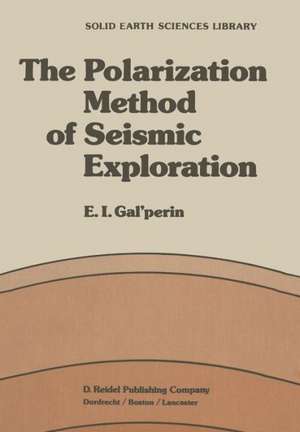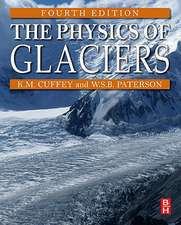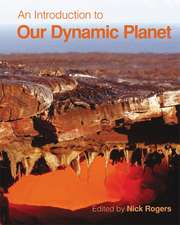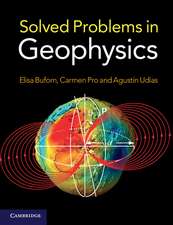The Polarization Method of Seismic Exploration: Solid Earth Sciences Library, cartea 1
Autor E.I. Galperinen Limba Engleză Paperback – 8 oct 2011
Preț: 390.08 lei
Nou
Puncte Express: 585
Preț estimativ în valută:
74.64€ • 78.14$ • 61.76£
74.64€ • 78.14$ • 61.76£
Carte tipărită la comandă
Livrare economică 07-21 aprilie
Preluare comenzi: 021 569.72.76
Specificații
ISBN-13: 9789400970939
ISBN-10: 9400970935
Pagini: 288
Ilustrații: 282 p.
Dimensiuni: 170 x 244 x 15 mm
Greutate: 0.46 kg
Ediția:1984
Editura: SPRINGER NETHERLANDS
Colecția Springer
Seria Solid Earth Sciences Library
Locul publicării:Dordrecht, Netherlands
ISBN-10: 9400970935
Pagini: 288
Ilustrații: 282 p.
Dimensiuni: 170 x 244 x 15 mm
Greutate: 0.46 kg
Ediția:1984
Editura: SPRINGER NETHERLANDS
Colecția Springer
Seria Solid Earth Sciences Library
Locul publicării:Dordrecht, Netherlands
Public țintă
ResearchCuprins
1: physical and geological foundations of the Polarization method.- Physical Premises for Increasing the Efficiency of Seismic Methods Used in the Study of Media with Complex Structures.- General Information on the Polarization of Seismic Waves.- Brief Review of Papers Dealing with the Study of Polarization of Seismic Waves.- Selected Results from the Theory of Harmonic Oscillations.- Stereographic Projections.- Controlled Directional Reception Based on Displacement Directions (CDR—I).- Polarization Filtering.- Methods of Representing Trajectories of Particle Motion.- 2: Instrumentation For Three-Component Observations Using The Polarization Method.- Three-Component Sets.- Making Multi-Component Polar Seismograms.- Instrumentation and Methods for Producing Oriented Records.- Fixed- and Tracking-Components Block.- Equipment for Three-Component Observations and Data Processing Used in Seismic Prospecting.- 3: Polar Correlation of Seismic Waves.- Derivation of Equations for Line-Ups and Amplitudes of Elliptically-Polarized Oscillations.- Analysis of Equations for Line-Ups and Amplitudes of Linearly-Polarized Waves.- Analysis of Equations for Line-Ups and Amplitudes of Elliptically-Polarized Waves.- Plotting Polar Seismograms.- Determination of Parameters of Linearly-Polarized Oscillations.- Determination of Parameters of Elliptically- and Multiply-Polarized Waves.- 4: Application of Seismic-Wave Polar Correlation.- Polarization of Explosion-Induced Direct P and S Waves.- Polarization of Direct Shear and Other Waves Induced by Weak Local Earthquakes.- Polar Correlation of Transmitted Converted Waves Induced by Distant Earthquakes.- Use of Polar Correlation in Studies Concerned with the Effect of Observation Conditions on the Shape of Wave Records.- 5:polarization-position correlation (ppc) of Seismic waves.- An Outline of PPC.- Practical Procedure for PPC.- Use of PPC in Seismic Prospecting for Ores.- Use of PPC in Seismic Prospecting for Oil.- Use of PPC in Establishing Continuity for Converted PS Waves Resulting from Distant Earthquakes.- 6: study of media on the basis of seismic wave Polarization.- Effect of Low-Velocity Layers (LVL) on Wave Polarization.- Study of Particle Displacement in a Vertical Plane.- Location of the Boundary Position from Transmitted Waves in VSP.- Locating the Position of the Boundary from Converted Transmitted Waves in Surface Observations.- Locating the Position of a Refracting Boundary from the Polarization of Compressionl Waves.- Conclusion.- References.- Appendix - Glossary.- Index of Subjects.- Index of Names.



























